In honor of BIRDS OF PREY coming out this week, we are having a week-long theme of looking at some under-appreciated, overlooked, or really just bizarre superhero and comic book-based films. Daily Grindhouse presents…Lost In The Gutters: Odd Superhero and Comic Book Films Week.
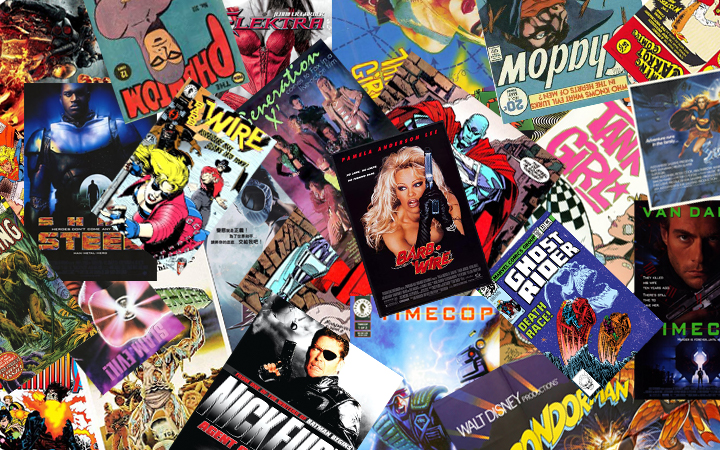
For long term fans of superhero comics, particularly of the “Big Two” (Marvel and DC), there’s many cyclical trends that repeatedly show up: Earth-shattering events, that eventually go back to status quo in a few years. Sometimes successful, sometimes awful, but always awkward attempts at bringing back obscure or less-than-beloved characters by creators that grew up loving that particular figure. One that seems to crop up every 5-10 years in Marvel Comics since the ‘80s is “The Mutant Breakfast Club:” After the All-New, All-Different X-Men debuted and ran for a while under Claremont’s writing, Marvel realized that the initial premise of X-Men—a school for powered teens that are misunderstood by the world at large—wasn’t being utilized anymore. Hence a recurrence of some version of a new teenage crop of mutants with weird abilities and lots of drama in a school setting: New Mutants, Generation X, Young X-Men, New X-Men, X-Men Academy, and more.

One of those mutant youth groups, the aforementioned Generation X, was very popular upon its debut in 1994. In addition to the built-in selling points that all teenagers feel like misfits while also showing off their hidden powers/abilities, Generation X was also more diverse in its characters than previous iterations featuring more women and non-white mutants. They were the hip, brash teen superheroes who had all the pop culture references and sarcastic quips of their slacker generation namesake.
Simultaneously, the early-to-mid ‘90s was a weird time for comics-based films. 1989’s BATMAN proved there was some element of crossover into other entertainment (after being jettisoned to Saturday morning cartoons for decades) and soon there was a land rush of studios scooping up the rights to various indie comics and Marvel Comics selling off various properties to different companies (as they frantically tried to stay one step in front of bankruptcy that was swiftly approaching).
The indie comics titles (THE CROW, TANK GIRL, FAUST, SPAWN, etc.) were mostly meant as counterculture programming to the spandex crowd in an attempt to appeal to the burgeoning alternative scene with its grunge music, gangsta rap, and general ennui and irony. But as for superheroes, it was really hard for anyone outside of the Gotham’s favorite son to work well in a live-action medium. From about 1995 to BLADE’s debut in 1998, filmmakers weren’t sure if they wanted to be taken seriously with their comics projects or if they thought the whole thing was a joke.
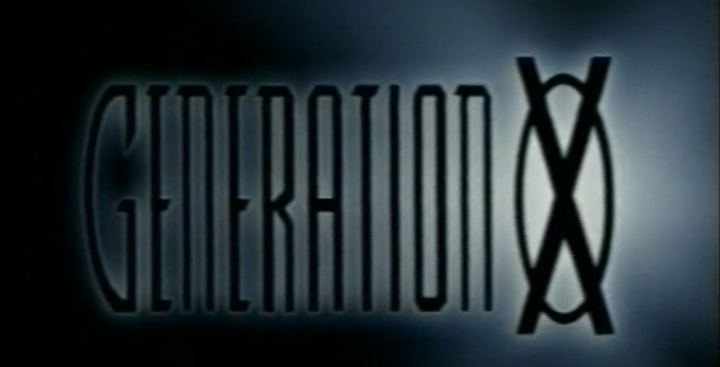
Enter GENERATION X, a made-for-TV film that aired on Fox on February 20, 1996. It was meant as a test for either an ongoing television show or a regularly recurring series of TV movies. At the time, Fox was huge with teenage soaps like Beverly Hills 90210, Party Of Five, and the like; meanwhile sci-fi properties like The X-Files and various syndicated Star Trek series were doing well too. So why not blend the two together, Misfits Of Science-style?
X-Men titles have always made sense for adaptation due to the potent metaphor, the fact that usually 80% of the characters look like gorgeous people, and the soap opera elements that Claremont emphasized in the ‘80s. On the other hand, a lot of the abilities that work on the page do not translate well to film, they usually require larger budgets, and there’s never a full embrace of the weirdness of the various plot elements that ends up making everything feel awkward and compromised. Such is the case with GENERATION X where a whole bunch of misfires vastly overshadow the few positive elements.
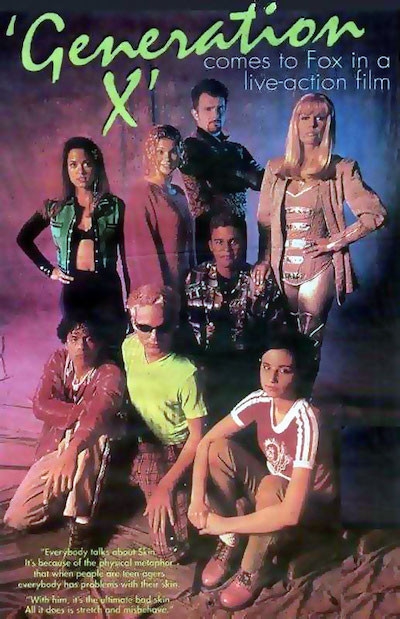
GENERATION X takes place in a world where it is illegal to be a mutant but Xavier’s School For Gifted Students offers a safe haven to those who would be persecuted, imprisoned, or sent off to camps. Two new students arrive at the academy, Angelo (aka Skin, played by Agustin Rodriguez) and Jubilation Lee (aka Jubilee, played by Heather McComb), both of whom are just coming into their powers (being very stretchy and shooting fireworks out of her hands, respectively). They soon meet their fellow classmates—Kurt (aka Refrax with the ability to shoot beams from his eyes but also can see through stuff, played by Randall Slavin); Arlee Hicks (aka Buff who has a lot of muscles, played by Suzanne Davis); Mondo (with the ability to take on the same consistency of anything he touches, played by Bumper Robinson); and Monet (who has super strength, intelligence, and invulnerability, played by Amarilis)—and begin clashing with each other almost immediately. Their instructors are Emma “White Queen” Frost (Finola Hughes), a powerful psychic (and evidently frequent Party City shopper), and Sean “Banshee” Cassidy (Jeremy Ratchford), who can stun people with his sonic screams and also have an Irish brogue that makes Warwick Davis look like James Joyce. Together they must face off against Russel Tresh (Matt Frewer), a mad scientist that wants to use mutant pineal glands to enter into the dream dimension and control people.
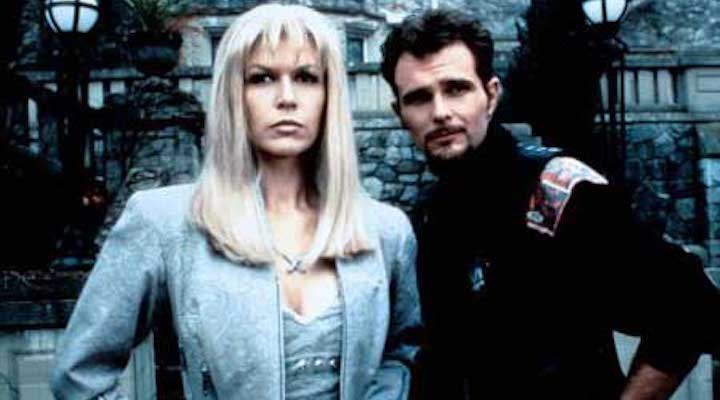
I was shocked to learn it was directed by Jack Sholder—who many of you know as the guy who made A NIGHTMARE ON ELM STREET 2: FREDDY’S REVENGE, ALONE IN THE DARK (1982), THE HIDDEN, and WISHMASTER 2. There are not many calling cards of his style in this, except there is a similar lack of realistic youth culture found in FREDDY’S REVENGE.
In the comics, Jubilee is a first-generation daughter of Chinese immigrants who is basically supposed to be a mallrat type. In this iteration, she is whitewashed into a young lady who dresses like 4 Non Blondes threw up on a Deee-Lite album. GENERATION X is the beginning of the weird trend of Jubilee constantly getting shafted in X-Men properties: the character was in X2, X-MEN: THE LAST STAND, and X-MEN: APOCALYPSE—always referenced by name, but usually getting only a few lines at best.
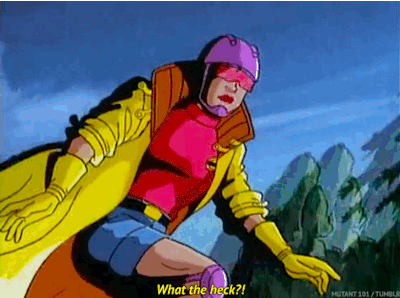
There are actually a couple of tie-ins to other X-MEN projects. The mansion used for exteriors of Xavier’s School in GENERATION X was used for that as well in X-MEN, X2, X-MEN: THE LAST STAND, X-MEN: DAYS OF FUTURE PAST, DEADPOOL, and X-MEN: APOCALYPSE. Ratchford also voiced Banshee in the X-Men ‘90s Animated TV Series. There are a few solid jokes (mostly delivered by Hughes and Ratchford), some cool use of Frost’s Jedi mind tricks to fool various normies, and the fact that Skin’s powers cause him agony is a nice touch that Rodriguez sells very well. So that’s the fun stuff and positive parts of this—but everything else is basically a hot mess.
Due to budget constraints, the teens use their powers a couple of times in the course of 87 minutes and is incredibly inconsistent when they happen and why. When they take on Tresh at the end (spoiler alert?), they don’t really even use their abilities or teamwork to take him out; it’s just like awkward flailing while Frewer spews wacky quips at them.
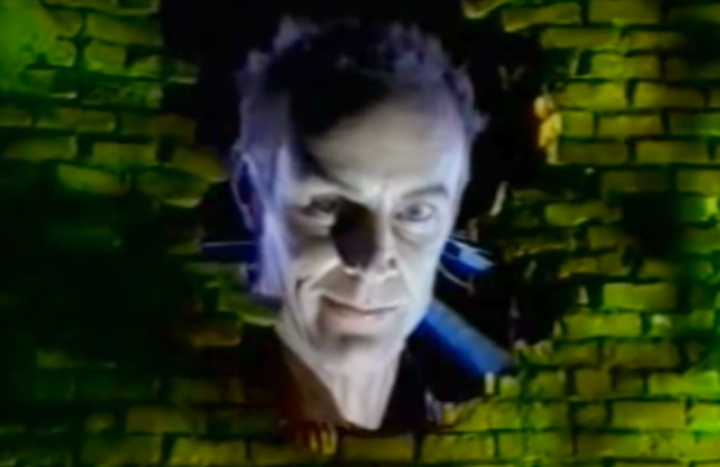
Speaking of Frewer, he is clearly meant to be following BATMAN FOREVER’s mold as he is essentially Freddy Krueger if played by Jim Carrey with weird jokes, manic energy, and New Jack Swing suits. There’s also a bunch of gobbledygook about how dreams aren’t dreams, but a different dimension that all mutants can enter. It’s all way too on the nose that a lot of his villainous plot is borrowed from The Riddler’s mind control plans from BATMAN FOREVER and the blipvert story from Max Headroom (which starred…Max Frewer).
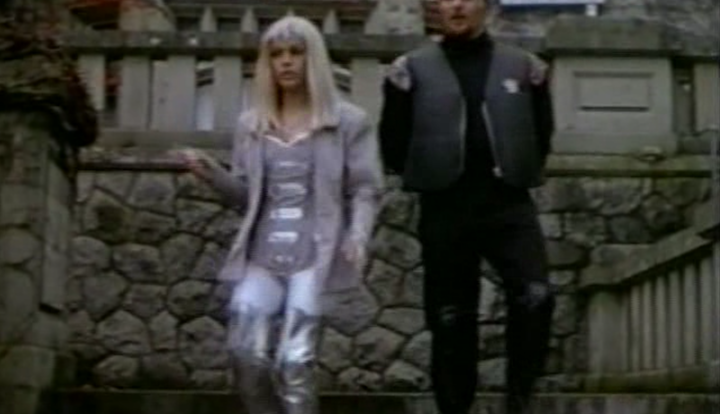
Hughes does her best as Emma Frost—but she is distractingly dressed like a GALAXINA-themed stripper on a very tight budget. It’s just cheap and weird looking—which is true of most of the visuals (and pretty standard for that time in television). While it was “necessary” for 2000’s X-MEN to feature the team in leather suits so audiences would take them more seriously, it was a welcomed change when more superhero movies (and TV shows) ditched the “realistic” angle and embraced cool-looking costumes. However, when “Buff” shows up at the very end of GENERATION X in her team uniform…yikes. It would be cool if a kid at a comic convention had made it—but considering there was a wardrobe department that got paid for it, it’s just…yikes.
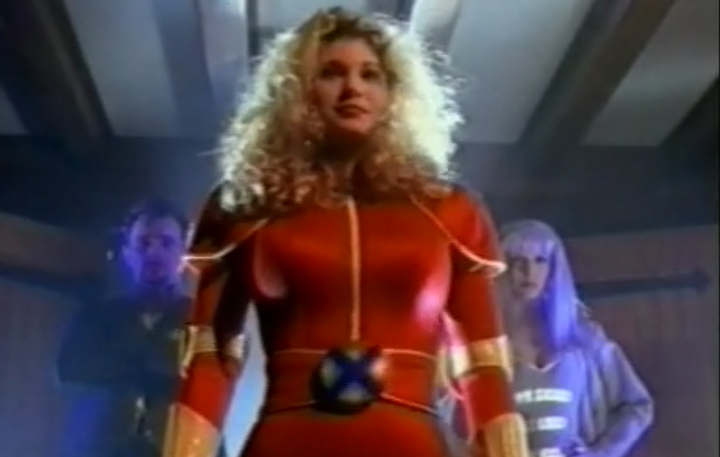
There’s always been a lot of inherent worth to superhero stories—great allegories, cool ideas, fun displays of imagination with outsized personalities. But a combination of budget constraints and a shyness of owning up to sillier aspects has created many compromised works. Filmmakers afraid these adaptations would be too easily dismissed end up creating convoluted movies that satisfy no one and leave audiences wondering why even adapt the property in the first place. GENERATION X is a fascinating failure that represents so many elements coming together into a time capsule project that highlights the particular clash of bright partying and jaded irony of the ‘90s; the weird wasteland of comic book adaptations in the mid-‘90s; and the awkward attempts of teen melodrama. It may be fun for nostalgic reasons or for those wishing to mock it, but otherwise GENERATION X is a bizarre mutation that has rightly faded into obscurity.
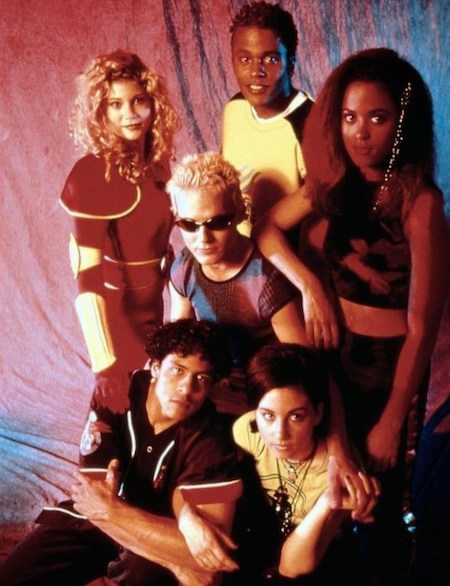
“There he goes. One of God’s own prototypes. A high-powered mutant of some kind never even considered for mass production. Too weird to live, and too rare to die.” — Hunter S. Thompson, Fear And Loathing in Las Vegas
Tags: '90s, 1990s, Agustin Rodriguez, Amarilis, Batman Forever, Bumper Robinson, Comic Books, Finola Hughes, Fox, Generation X, Heather McComb, Jack Sholder, Jeremy Ratchford, Jubilee, made-for-television movies, Marvel Comics, Matt Frewer, Mutant, Randall Slavin, Superheroes, Suzanne Davis, X-Men


No Comments